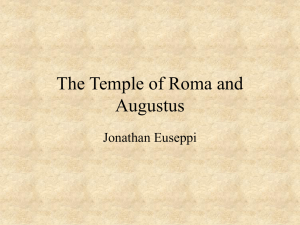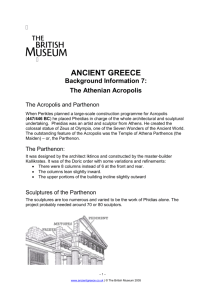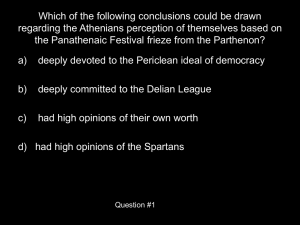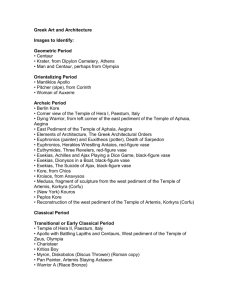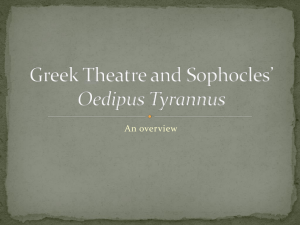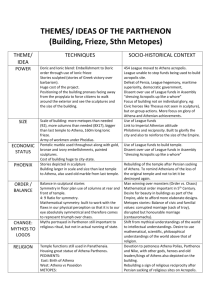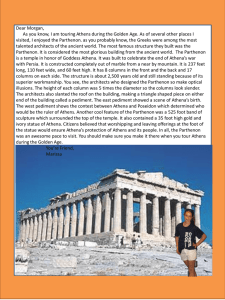INTERTANKO Tanker Event 2015 – Lagonissi – Partners
advertisement
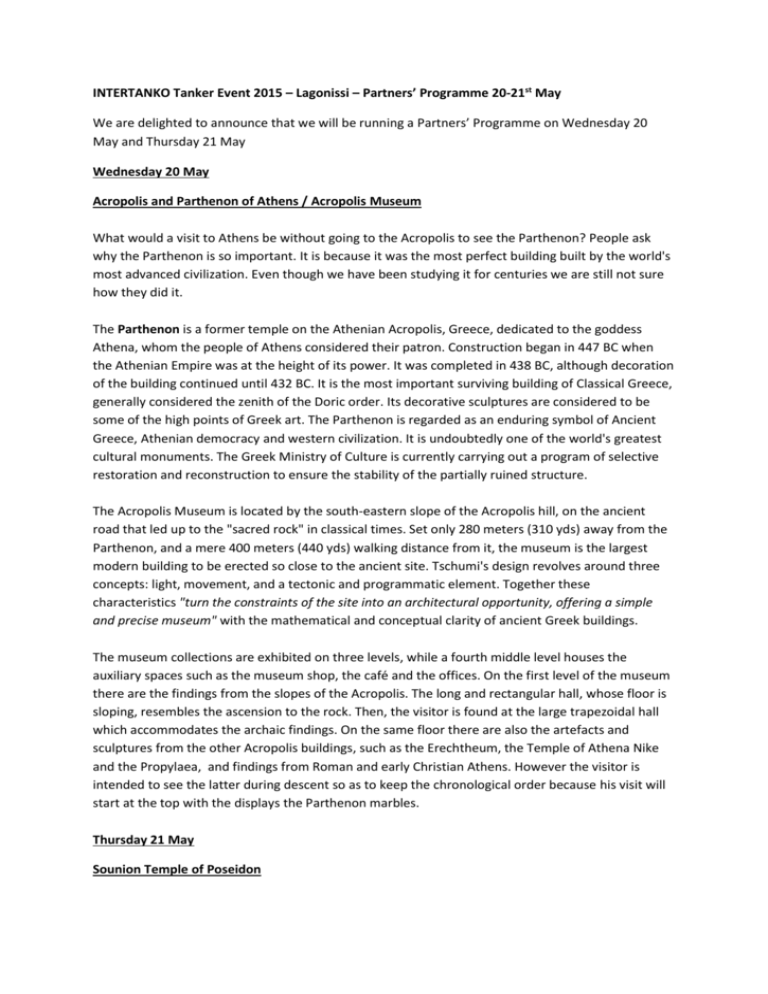
INTERTANKO Tanker Event 2015 – Lagonissi – Partners’ Programme 20-21st May We are delighted to announce that we will be running a Partners’ Programme on Wednesday 20 May and Thursday 21 May Wednesday 20 May Acropolis and Parthenon of Athens / Acropolis Museum What would a visit to Athens be without going to the Acropolis to see the Parthenon? People ask why the Parthenon is so important. It is because it was the most perfect building built by the world's most advanced civilization. Even though we have been studying it for centuries we are still not sure how they did it. The Parthenon is a former temple on the Athenian Acropolis, Greece, dedicated to the goddess Athena, whom the people of Athens considered their patron. Construction began in 447 BC when the Athenian Empire was at the height of its power. It was completed in 438 BC, although decoration of the building continued until 432 BC. It is the most important surviving building of Classical Greece, generally considered the zenith of the Doric order. Its decorative sculptures are considered to be some of the high points of Greek art. The Parthenon is regarded as an enduring symbol of Ancient Greece, Athenian democracy and western civilization. It is undoubtedly one of the world's greatest cultural monuments. The Greek Ministry of Culture is currently carrying out a program of selective restoration and reconstruction to ensure the stability of the partially ruined structure. The Acropolis Museum is located by the south-eastern slope of the Acropolis hill, on the ancient road that led up to the "sacred rock" in classical times. Set only 280 meters (310 yds) away from the Parthenon, and a mere 400 meters (440 yds) walking distance from it, the museum is the largest modern building to be erected so close to the ancient site. Tschumi's design revolves around three concepts: light, movement, and a tectonic and programmatic element. Together these characteristics "turn the constraints of the site into an architectural opportunity, offering a simple and precise museum" with the mathematical and conceptual clarity of ancient Greek buildings. The museum collections are exhibited on three levels, while a fourth middle level houses the auxiliary spaces such as the museum shop, the café and the offices. On the first level of the museum there are the findings from the slopes of the Acropolis. The long and rectangular hall, whose floor is sloping, resembles the ascension to the rock. Then, the visitor is found at the large trapezoidal hall which accommodates the archaic findings. On the same floor there are also the artefacts and sculptures from the other Acropolis buildings, such as the Erechtheum, the Temple of Athena Nike and the Propylaea, and findings from Roman and early Christian Athens. However the visitor is intended to see the latter during descent so as to keep the chronological order because his visit will start at the top with the displays the Parthenon marbles. Thursday 21 May Sounion Temple of Poseidon The Temple of Poseidon was constructed in 444–440 BC, over the ruins of a temple dating from the Archaic Period. It is perched above the sea at a height of almost 60 metres (200 ft). The design of the temple is a typical hexastyle, i.e. it had a front portico with six columns. Only some columns of the Sounion temple stand today, but when intact it would have closely resembled the contemporary and well-preserved Temple of Hephaestus beneath the Acropolis, which may have been designed by the same architect. As with all Greek temples, the Poseidon building was rectangular, with a colonnade on all four sides. The total number of original columns was 34 of which 15 still stand today. The columns are of the Doric order. They were made of locally-quarried white marble. They were 6.10 m (20 ft) high, with a diameter of 1 m (3.1 ft) at the base and 79 cm (31 inches) at the top. At the centre of the temple colonnade would have been the hall of worship (naos), a windowless rectangular room, similar to the partly intact hall at the Temple of Hephaestus. It would have contained, at one end facing the entrance, the cult image, a colossal, ceiling-height (6 metres (20 ft)) bronze statue of Poseidon. Probably covered in gold leaf, it may have resembled a contemporary representation of the god, appropriately found in a shipwreck. Poseidon was usually portrayed carrying a trident, the weapon he supposedly used to stir up storms. On the longest day of the year, the sun sets exactly in the middle of the caldera of the island of Patroklou, the extinct volcano that lies offshore, suggesting astrological significance for the siting of the temple. The temple of Poseidon was destroyed in 399 by Emperor Arcadius. If you or your partner wishes to join either of these, please contact Alex Hardman alex.hardman@intertanko.com or Adele Robinson adele.robinson@intertanko.com
